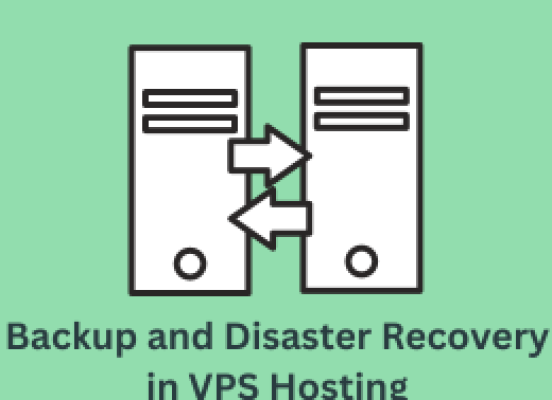
Backup and Disaster Recovery in VPS Hosting: Ensuring Data Protection
- By admin --
- Thursday, 13 Jul, 2023
Introduction:
In the digital age, data has become one of the most valuable assets for businesses and individuals alike. With the increasing reliance on virtual private server (VPS) hosting for website and application deployment, the importance of implementing robust backup and disaster recovery strategies cannot be overstated. This article explores the significance of data protection in VPS hosting and highlights essential considerations for ensuring comprehensive backup and disaster recovery.
-
Understanding VPS Hosting: VPS hosting is a popular choice for hosting websites and applications due to its flexibility, scalability, and cost-effectiveness. In this setup, a physical server is divided into multiple virtual servers, allowing each user to have dedicated resources and control over their environment. While VPS hosting offers several advantages, it also introduces unique challenges regarding data protection.
-
Importance of Backup and Disaster Recovery: Data loss or service interruption can have severe consequences for businesses, including financial loss, damaged reputation, and legal implications. Therefore, establishing a robust backup and disaster recovery plan is crucial to mitigate the risks associated with potential data loss or system failures.
-
Backup Strategies: a. Regular Backup Schedules: Implementing a regular backup schedule ensures that critical data is captured at frequent intervals. The frequency of backups may vary depending on the volume and criticality of data, but it is essential to strike a balance between data protection and resource utilization. b. Offsite Backup Storage: Storing backups offsite, preferably in geographically diverse locations, provides an additional layer of protection against physical damage or localized disasters. Cloud storage solutions are often utilized for secure and scalable offsite backup storage. c. Incremental and Full Backups: Employing both incremental and full backups allows for efficient data recovery. Incremental backups capture changes made since the last backup, reducing the time and resources required. Full backups provide a complete snapshot of the data, ensuring comprehensive restoration if required. d. Data Encryption: Encrypting backups adds an extra layer of security, safeguarding sensitive information from unauthorized access during transit and storage.
-
Disaster Recovery Strategies: a. Business Impact Analysis (BIA): Conducting a BIA helps identify critical systems, applications, and data that must be prioritized during disaster recovery. It enables businesses to define recovery time objectives (RTOs) and recovery point objectives (RPOs) based on their specific needs. b. Redundancy and High Availability: Implementing redundant infrastructure, such as multiple VPS instances across different data centers, improves system availability. Load balancing, failover mechanisms, and automated monitoring further enhance service continuity during failures. c. Disaster Recovery Testing: Regular testing and validation of the disaster recovery plan are essential to ensure its effectiveness. Conducting drills and simulations helps identify any gaps or weaknesses, allowing for necessary improvements to be made proactively. d. Managed Backup and Disaster Recovery Services: Outsourcing backup and disaster recovery to specialized service providers can alleviate the burden on businesses and provide expertise in implementing and managing comprehensive data protection strategies.
-
Security Considerations: a. Access Control and Authentication: Implementing strong access controls and authentication mechanisms ensures that only authorized personnel can perform backup and recovery operations. b. Data Encryption: Encrypting data at rest and in transit safeguards sensitive information from unauthorized access, mitigating the risk of data breaches. c. Monitoring and Auditing: Continuous monitoring and auditing of backup and disaster recovery processes help detect any anomalies or unauthorized activities promptly. d. Employee Training and Awareness: Regular training programs and awareness campaigns educate employees about the importance of data protection and their roles in maintaining the integrity of backup and disaster recovery processes.
-
Compliance and Legal Considerations: Adhering to relevant data protection regulations and industry standards is vital for businesses operating in various sectors. Compliance requirements may include data retention periods, privacy regulations, and specific security measures. Ensuring backup and disaster recovery processes align with these requirements reduces the risk of legal penalties and reputational damage.
Conclusion:
In the realm of VPS hosting, data protection is of paramount importance to businesses and individuals. Establishing comprehensive backup and disaster recovery strategies helps mitigate the risks associated with data loss, system failures, and service interruptions. By implementing regular backups, offsite storage, robust disaster recovery plans, and security measures, businesses can safeguard their valuable data, maintain operational continuity, and build trust among their customers.





